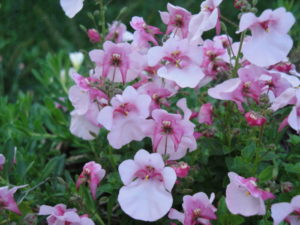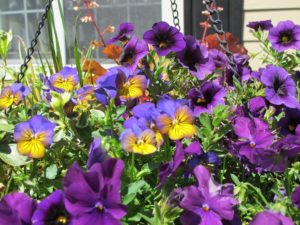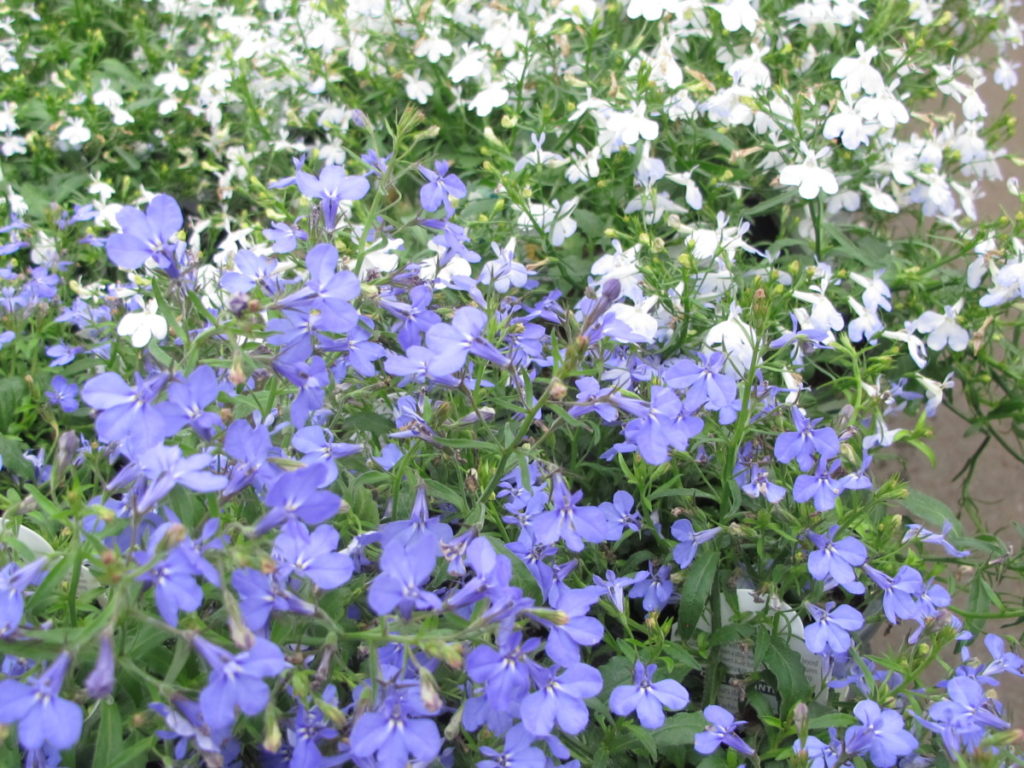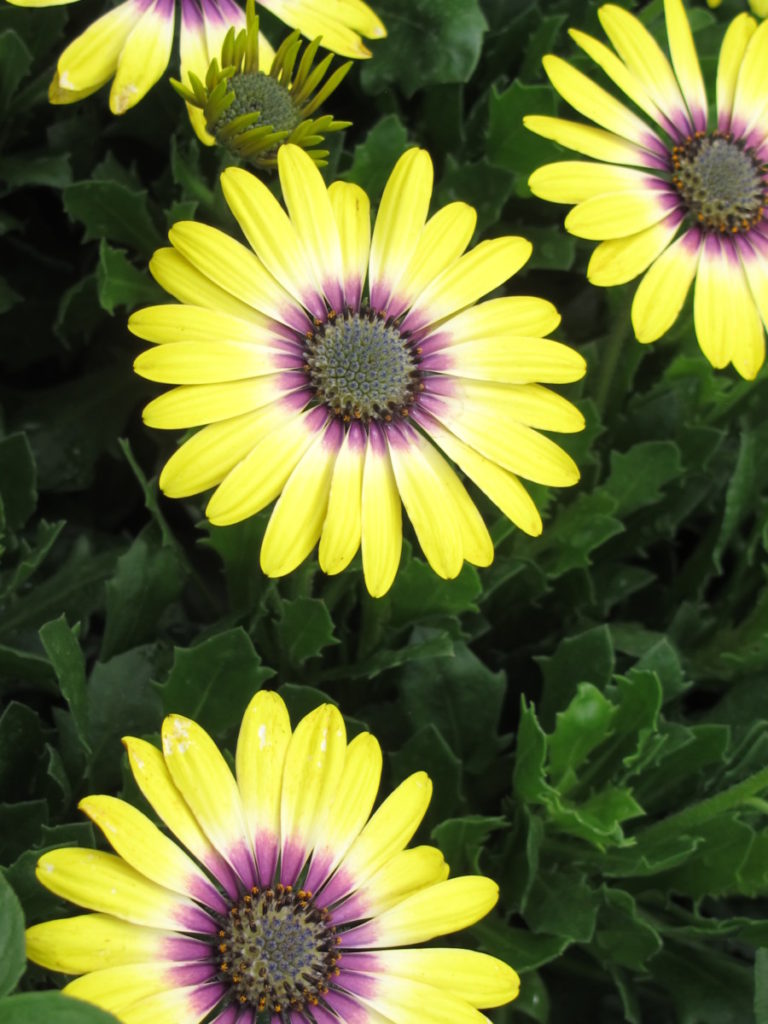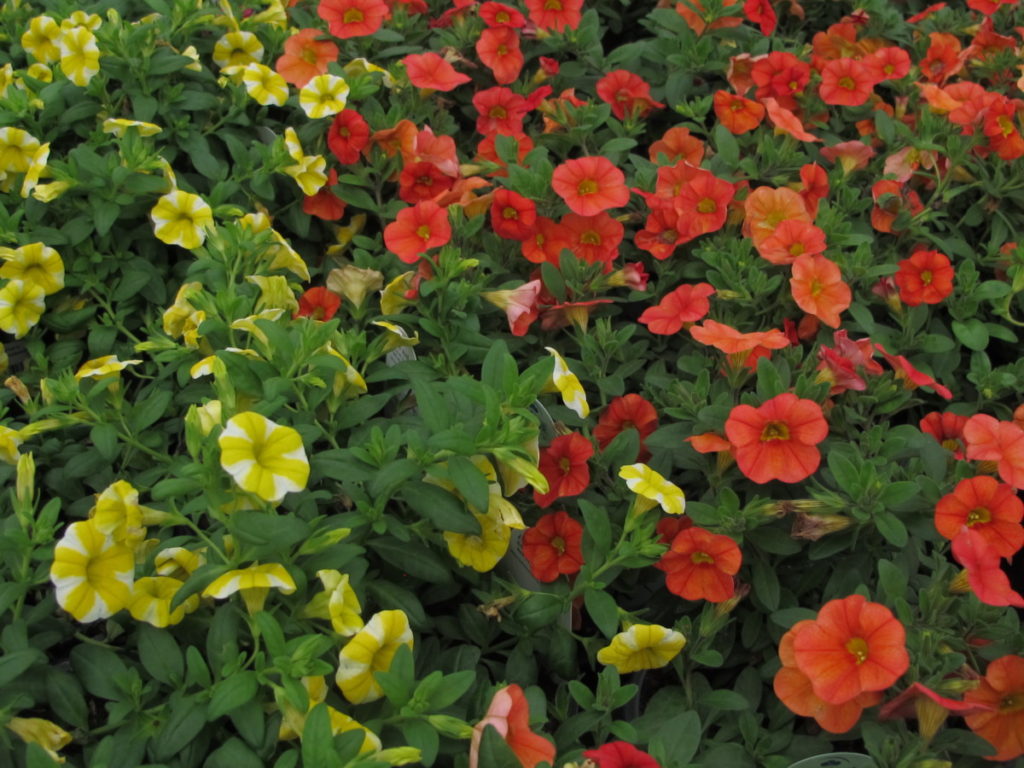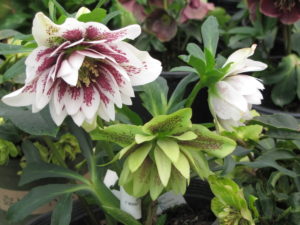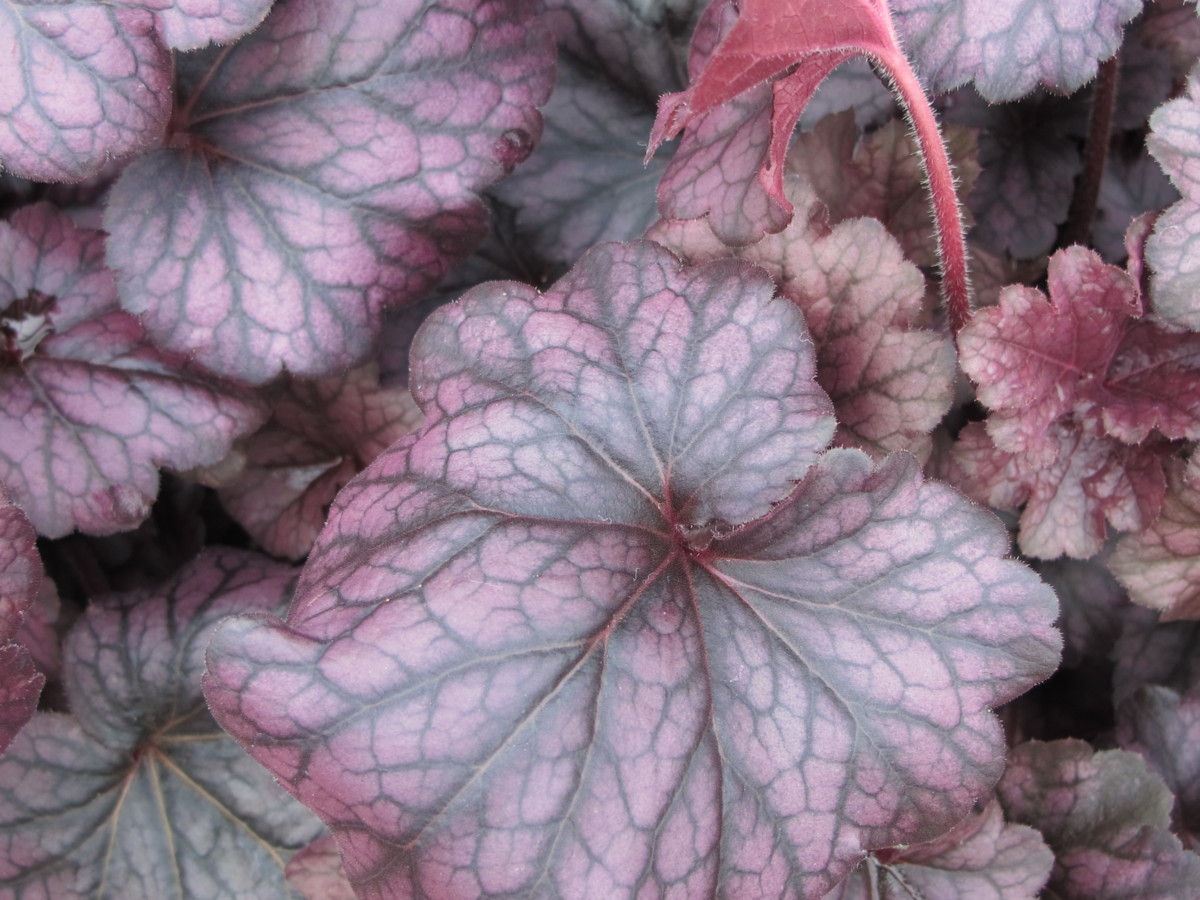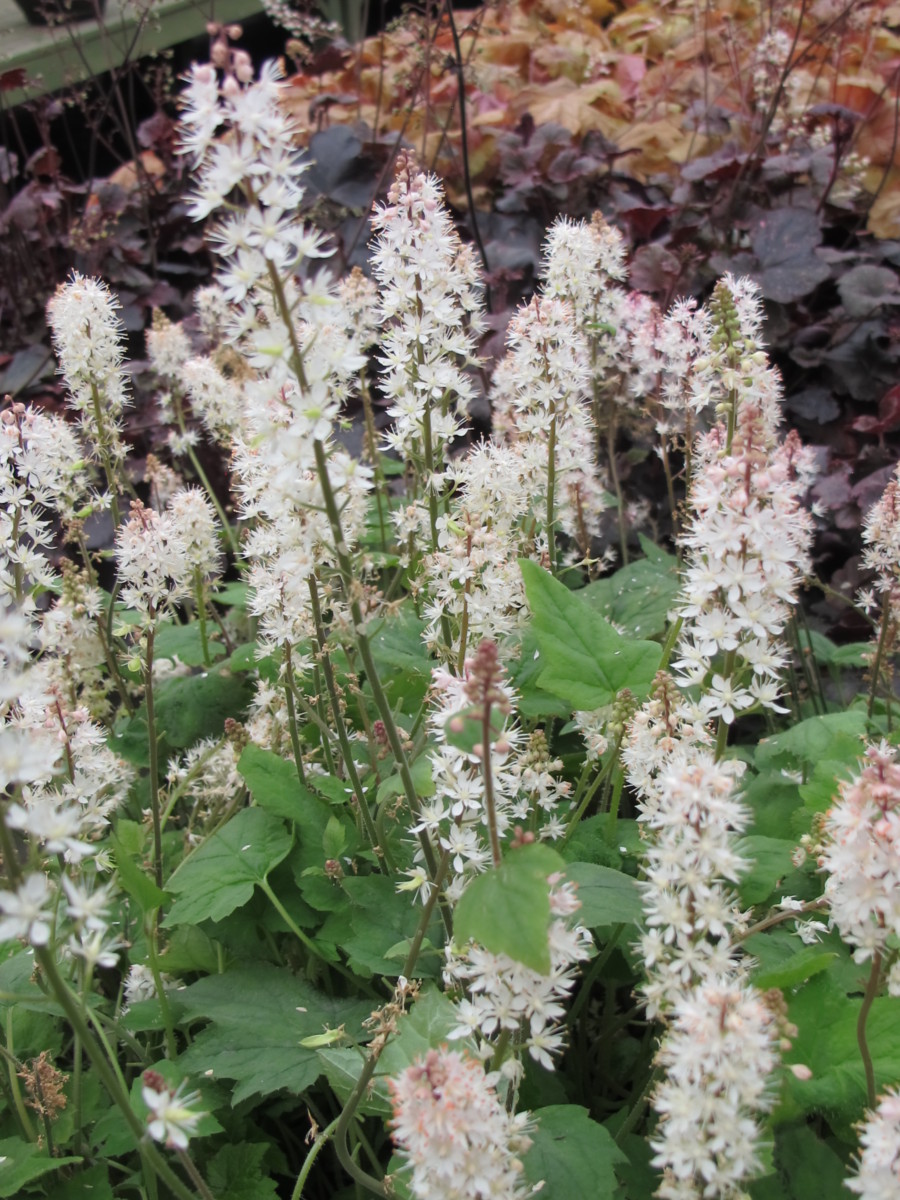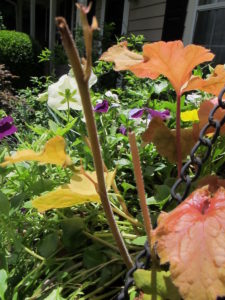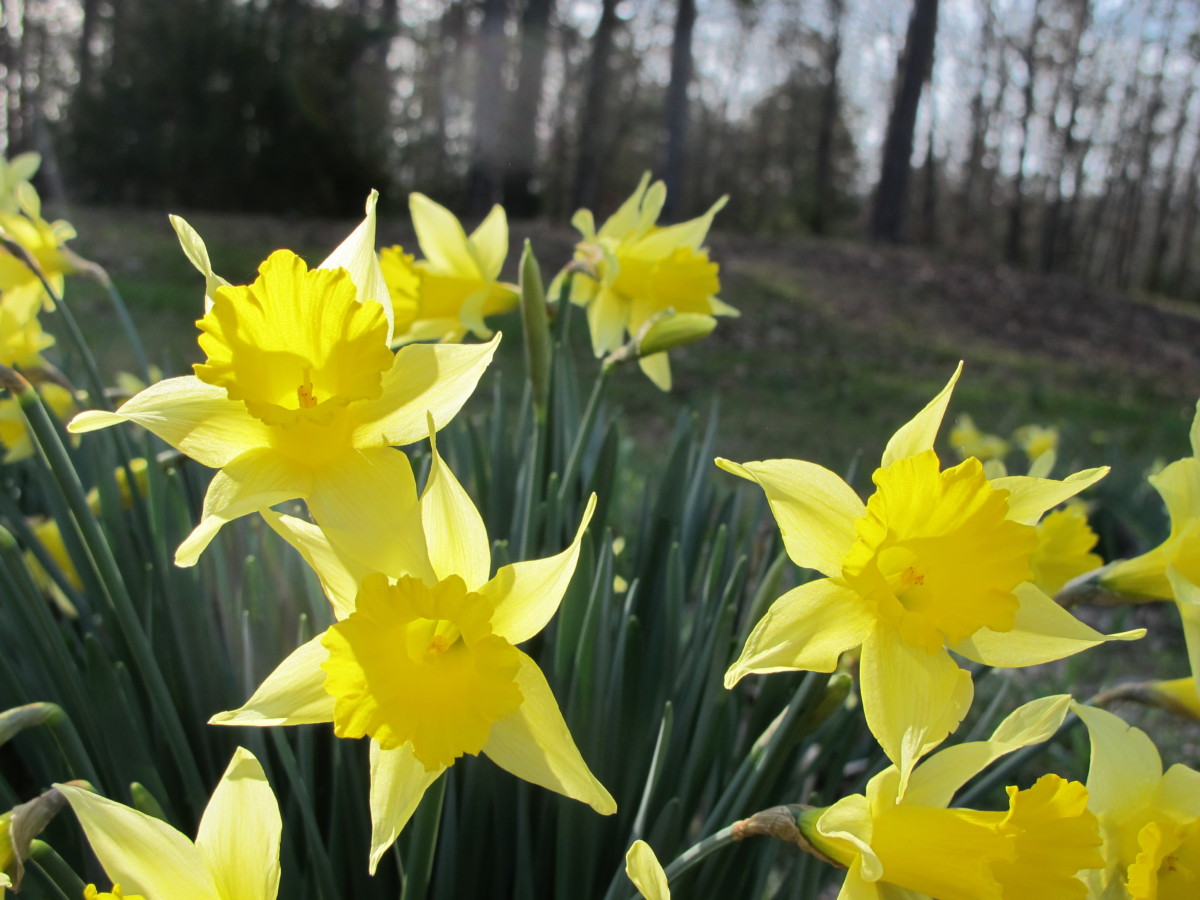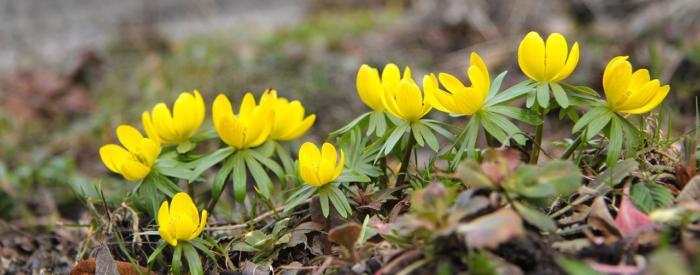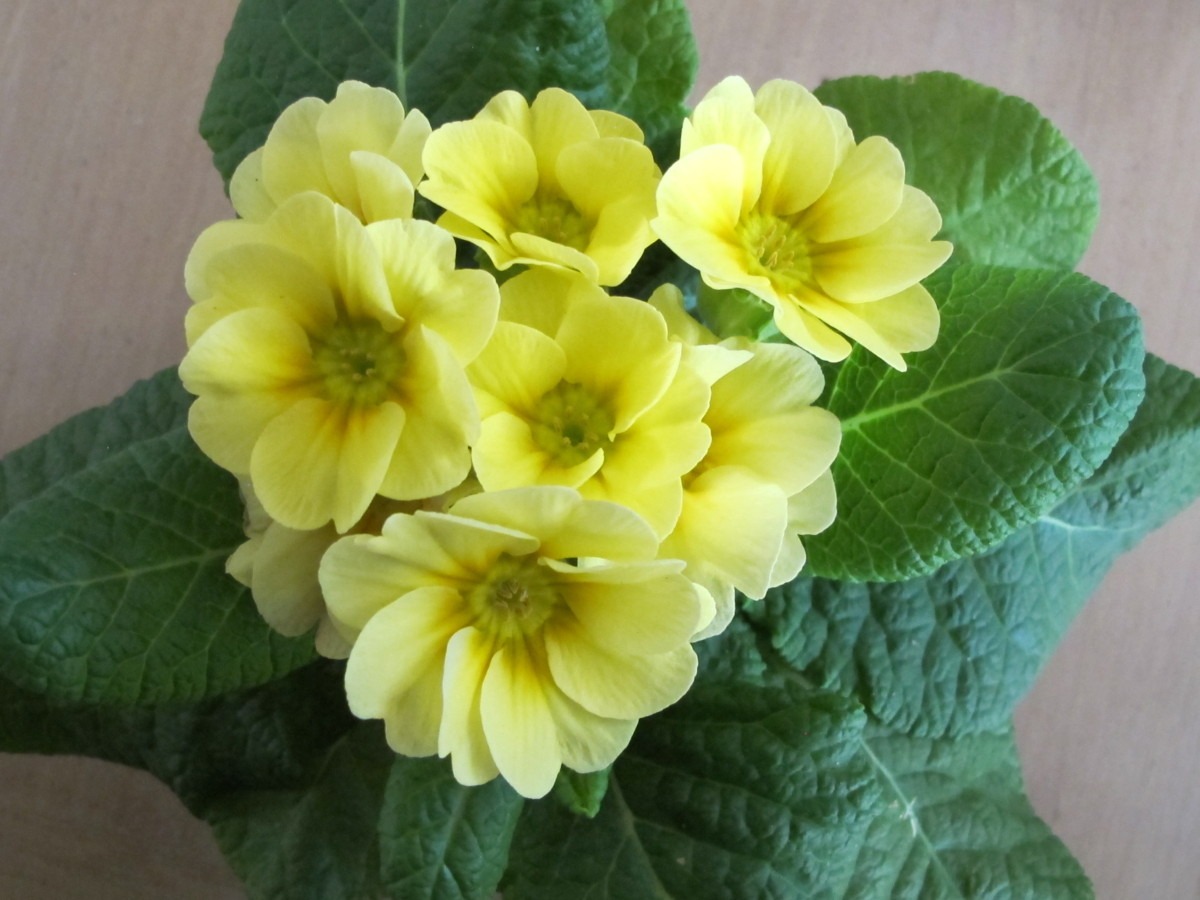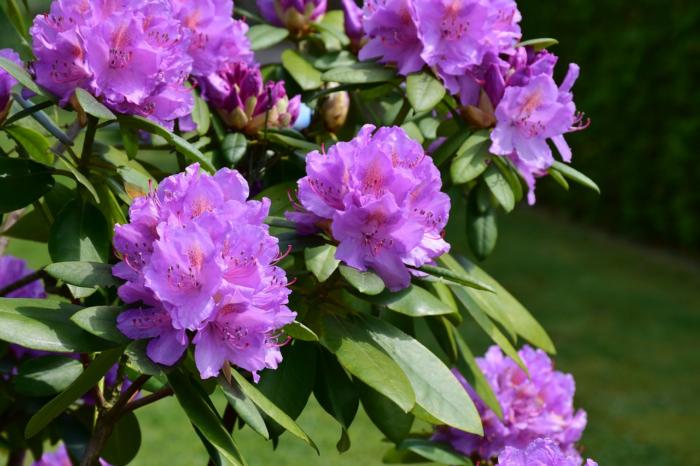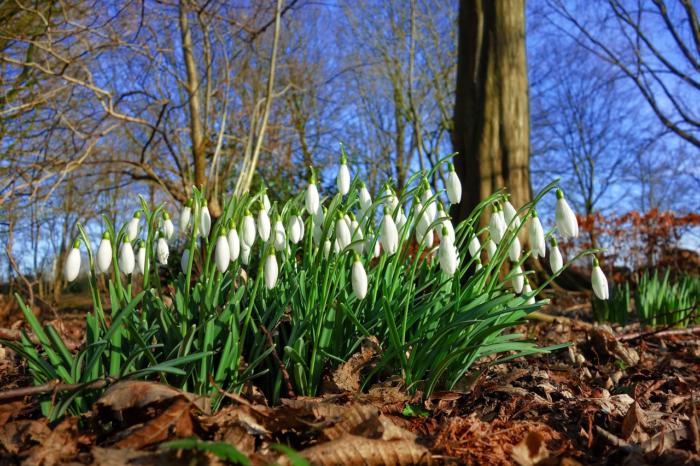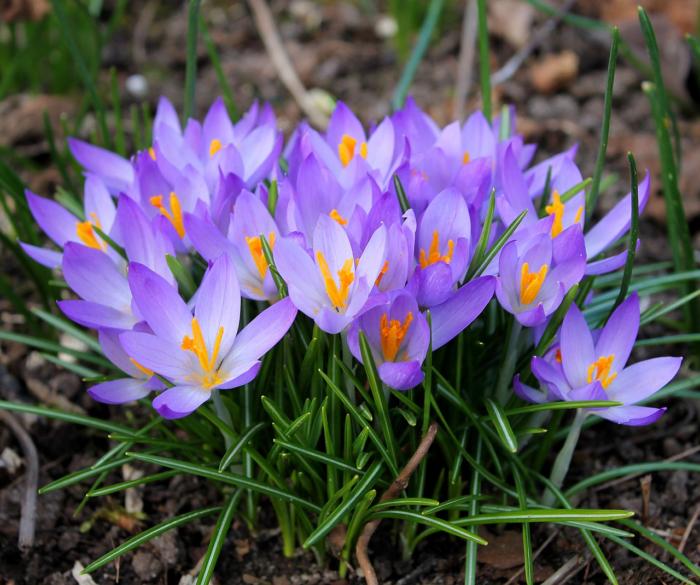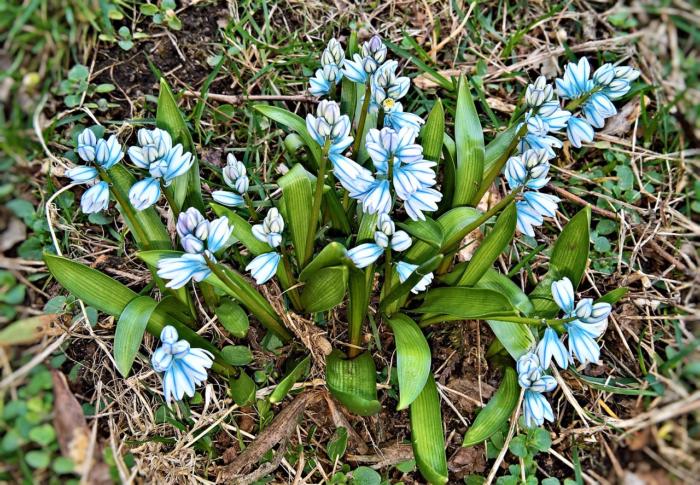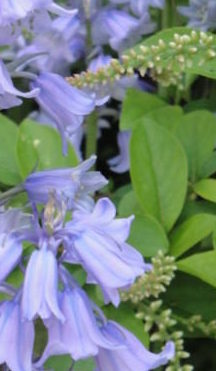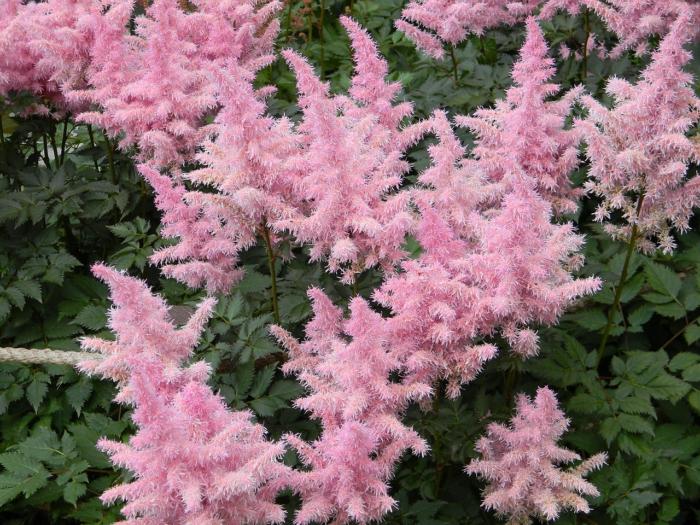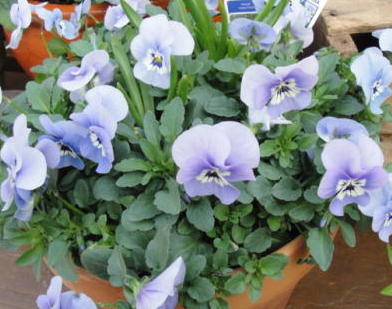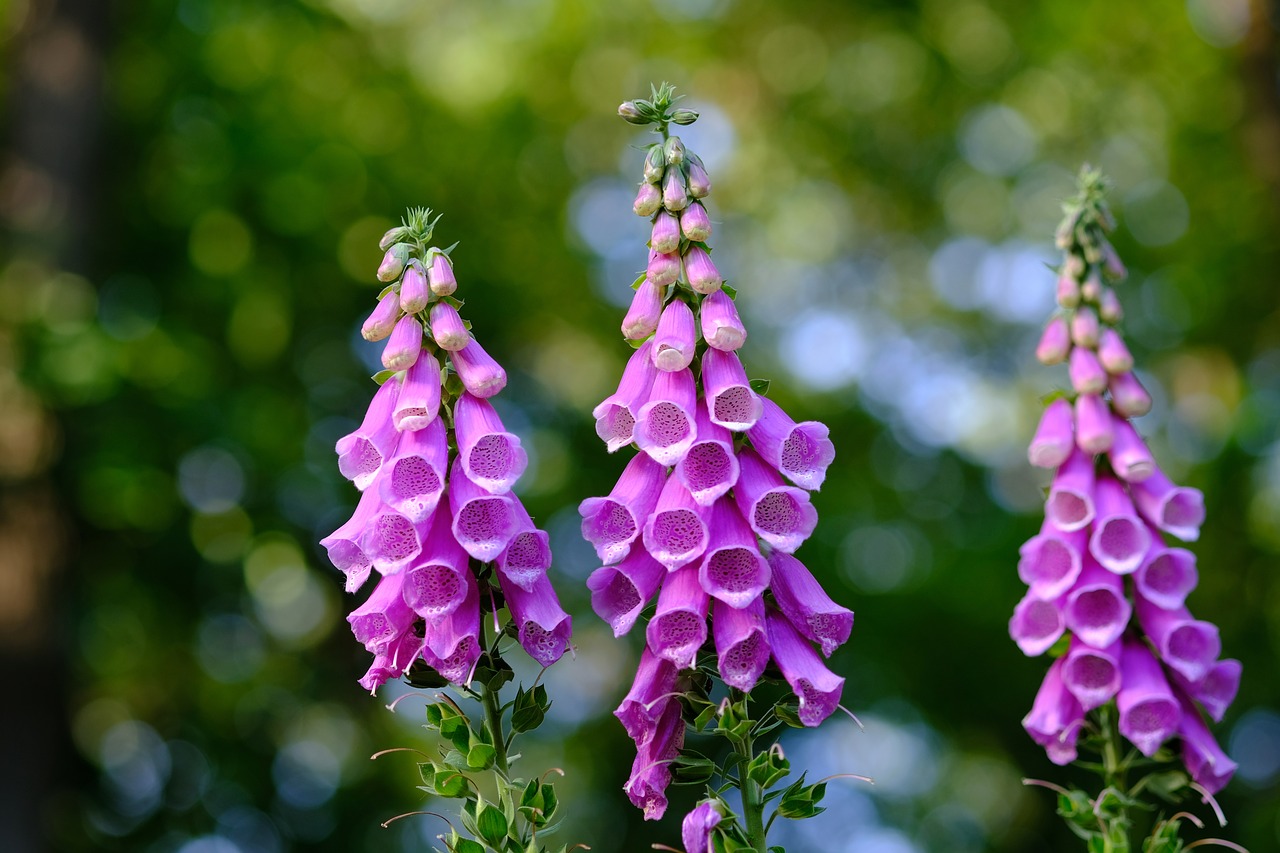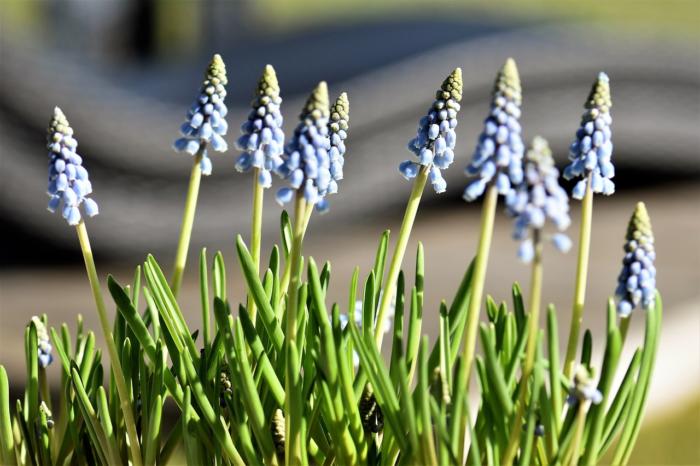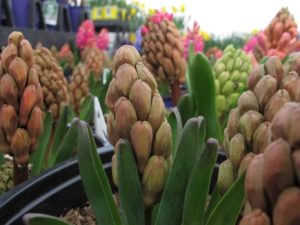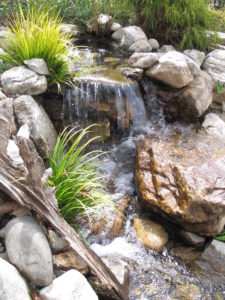Page 2
What Can I Plant After Hardening Off?
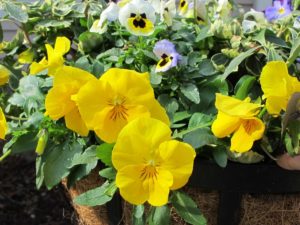
‘Cool Wave’ pansy and violas, with variegated pachysandra.
The Safest Bet: Pansies and Violas
Most garden centers still have a good supply of these biennials, which complete their life cycle in 2 seasons. After being sown in mid to late summer, viola and pansy seedlings grow and flower in autumn, often blooming over the winter and again in spring. Greenhouses in colder climates often sow them in the winter for spring sales. These flowers have a light fragrance.
In this area, it’s not uncommon to see these plants in garden centers from September through March. They don’t grow well in hot weather.
Pansies planted in autumn can go dormant or semi-dormant in the cold winter months, emerging and blooming again as it warms up. In severely cold seasons, or in most of the northern half of the country (zone 5 or colder), they just die. New flowers are smaller when growing in warm weather.
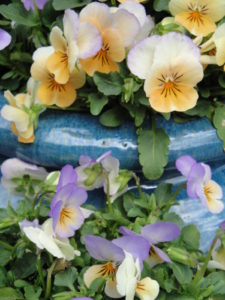
Violas in a frost resistant strawberry jar.
Violas, smaller cousins of the pansy, can tolerate areas up to two zones colder than pansies. Their flower buds are more durable than those of pansies and bounce back quickly after a freeze. Furthermore, violas tolerate partial sunlight, whereas pansies need more sun. For both of these plants, the more hours of direct sun they receive, the heavier they bloom.
Pansies and violas (family Violaceae) need well-drained acidic soil. Overwatering can result in root rot diseases, which kill the plants. Fertilize every 6 to 8 weeks while they’re actively blooming. Garden center tables are filled with these hardy plants for great spring color before the more heat-tolerant annuals become available. Plants that have been growing outdoors won’t require hardening off.
High temperatures cause their decline in late spring to early summer. Sometimes, however, you can spot small viola or pansy seedlings sprouting in late summer, near where they used to grow.
The ‘Cool Wave’ Pansies
A few years ago, I had to pull out ‘Cool Wave’ pansies that had been growing all winter in a mixed 16″ hanging basket. Still in full bloom in the middle of July, they had to be removed to make room for summer annuals. ‘Cool Wave’ pansies have smaller flowers than regular pansies, but one plant can spread 2′ wide. Fewer plants are required to fill a bed, but I like to use them in baskets or at the edge of a combination pot.
Half-Hardy Annuals Need Hardening Off
When planning the garden, choose plants that can tolerate the fluctuations of the shoulder season. That’s this unsettled period when frost occurs one day, and fine weather the next. No, it’s not the right time to plant geraniums or pole beans. But snapdragons, dusty miller, and dianthus (Sweet William) that have undergone hardening off are safe to plant. Here and now (early spring) in the Carolinas, that is. Not in Wayne, Maine, or in Helena, Montana!
These half-hardy annuals can be added to the garden in the fall, in areas with mild winters. They regrow in the spring and might come back for one or two years. Many other cultivars of dianthus, cousins of the carnation, are longer-lived perennials and can be found in garden centers spring through fall.
A hardy annual I have yet to see this year is Diascia, also called twin-spur (photo, above). Its flowers come in white and shades of pink, red, and orange. The foliage is fine in texture, mounding over the edge of a container. It performs best in cool weather, tolerating light frost, and sun. Decades ago, before the hybrids became available, I grew seeds ordered from Thompson and Morgan.
Another genus that is difficult to find as plants is toadflax (Linaria). It has a vertical habit, comes in a wide range of colors, and tolerates cool weather. Its bloom spikes are composed of tiny snapdragon-like flowers.
Next to go outside are osteospermum, lobularia, lobelia, calibrachoa, and petunia transplants. They might suffer some frost damage in exposed locations, but potted up and kept on a covered porch, they’ll probably get through a chilly night. Or cover planted flowers with an old sheet, raised off the foliage. After hardening off these plants, they’ll tolerate cool conditions but not a hard freeze.
Avoid keeping the soil overly moist when it’s chilly. Thorough soil preparation improves drainage.
(***Update***: After a mild winter, but with several nights near 20°, a purple calibrachoa survived and bloomed heavily. Spring, 2020)
Check the Weather Forecast!
After checking weather predictions from the U.S. Weather Service, proceed or delay until seasonable weather can be relied upon. Your local garden center can advise you, but predictions go out the window when the wind changes direction.
- Lobelia ‘Techno Heat Electric Blue’
- Osteospermum ‘Blue Eyed Beauty’
- Calibrachoa cultivars (all from Pike’s)
Isn’t it just like a gardener to tempt fate?! That’s a decision you can make for yourself—whether to take the chance and plant something early, fully aware of the consequences, or to play it safe. With polypropylene row covers or some old sheets ready for duty, I’m inclined to take the gamble…next week.
Helleborus
Many gardeners call lenten roses, or Hellebores, the “jewels of the winter garden”. These plants begin to bloom in the winter in moderate climates, and in late winter and spring where it’s colder. Hellebores grow in light shade or partial sun. If you have a choice between morning or afternoon sun, choose the cooler morning sun in warmer zones.
In cold climates, all the foliage can turn brown. Cut back the dead foliage in late winter or after the most severe weather has passed. Also, avoid planting them where wind will damage the foliage and flowers.
Modern breeding has brought us doubles and colors (deep purple! peach!) we never saw years ago. A few cultivars have been bred with “up-facing” flowers. Most of the hybrids have H. orientalis in their lineage; Hellebores belong to the Ranunculaceae family. It’s one of the easiest and longest-lived perennials for shade, and deer and voles don’t eat it.
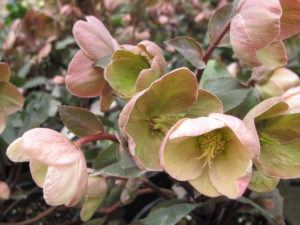
Helleborus ‘Pink Frost’.
Hellebores can self-seed, considered a fault by some, although many of the newer hybrids are sterile. Fortunately, because these sterile hybrids don’t produce viable seed, they tend to be heavy bloomers. Plants in full leaf growing in a greenhouse will need hardening off before setting out in the garden.
Even though hellebores aren’t fussy about soil, you do want to make sure the bed drains well. Digging in pine fines and some compost is a good idea. They prefer soil with slightly acidic to neutral pH, so add some ground limestone if your soil is more acidic.
Don’t overwater, and keep the foliage and flowers dry to avoid Botrytis (gray mold) in the flowers. Fertilize in autumn with a complete formulation that contains iron, and again when active growth begins in spring.
Heuchera
There are few groups of plants that offer more diversity in foliage color than Heuchera. Chartreuse, gold with red veins, 15 shades of cinnamon orange, green with purple veins or solid pistachio, burgundy, black with pinkish spots, and dozens of “warm” or “cool” purples. Heuchera‘s cousin, Tiarella (foamflower), and their intergeneric hybrids, X Heucherella, offer even more color combinations. A few cultivars have trailing habits.
Heuchera (“hyoo′ ker uh”) is native to North America and is hardy in zones 4 through 9. A few cultivars of these coral bells will tolerate even warmer temperatures, south to zone 10 or 11. Gardeners in warm regions should look for cultivars with H. villosa in their breeding. I have used H. villosa ‘Autumn Bride’ in customers’ landscapes and in mine. Their fuzzy gray-green leaves are dinner plate size, and ivory flowers tower over the large clumps in autumn. And, of course, I’ve planted many of the colorful varieties as well.
Colors intensify when cool weather arrives in autumn, rivaling the fall color of the trees growing above them. I often use Heuchera in combination pots, both summer and winter. Add some color-coordinated and equally cold tolerant companion plants for a stunning seasonal display.
- X Heucherella ‘Pink Fizz’
- X Heucherella ‘Sweet Tea’
- Heuchera ‘Grape Expectations’
- X Heucherella ‘Redstone Falls’, a trailer
- Tiarella wherryi
- Heuchera ‘Galaxy’ in front of H. ‘Guacamole’
These evergreen or semi-evergreen perennials are related to Astilbe and strawberry begonia (Saxifraga stolonifera), in the Saxifragaceae family.
Light Matters
Some of the cultivars tolerate full sun and others need light shade or dappled shade. The popular chartreuse-leaved ‘Citronelle’ (photo, below, under “The Warm Color Palette”) is especially sensitive. It prefers light shade or “moving” shade as temperatures climb. Those parts of the leaves that are perpendicular to the hottest rays of the sun, on a hot day, will show sun scald—first a bleaching of the foliage, and, later, dead brown patches.
Many of the light-colored cultivars react to sun in this way, but the black or purple varieties, generally, can take more sun. Each variety has its own tolerance level. Gardeners in areas where the sun is less intense might not have this concern.
Rule of thumb: The hotter the temperature, the more shade Heuchera likes. Morning sun is less stressful than intense afternoon sun. Take that into consideration when deciding if Heucherella ‘Sweet Tea’ should go on the right side or the left side of the evergreens.
The shade- or partial-shade-loving Heucheras look great in garden beds shared with ferns, hostas, Hellebores, rhododendrons, and azaleas. Plant them with spring flowering bulbs, which bloom before the heucheras fully leaf out, and under the high canopy of deciduous trees.
Good Drainage, Bad Deer
Heucheras cannot tolerate wet soil, so do thorough soil preparation before planting. Incorporate a few inches of pine fines, or soil conditioner, into the top 12″ of the bed, along with some compost. Adding coarse sand (not fine play sand) is also a good idea.
Pick up a bottle of Deer Stopper while you’re at the garden center. You might have read that deer don’t eat these plants…and maybe they don’t where you live. The photograph at right shows some of petioles remaining after deer nibbled this Heuchera in North Carolina. Fortunately, it will regrow new foliage.
These plants thrive with proper growing conditions. Sometimes, Heucheras in the Maryland garden failed when weevil larvae ate through, and took up residence in, the stems of the plants, causing wilt and death. More commonly, though, improper moisture levels and too much shade or sun cause trouble for plants in this genus.
Because of their beautiful colors and design possibilities, I’m willing to make more of an effort to keep them looking good in my garden.
The Warm Color Palette
Consider color combinations carefully for effective design. Gold, orange, and warm cinnamon colors of Heuchera look good with yellow or cream variegated hosta and autumn fern (Dryopteris erythrosora ‘Brilliance’), with its coppery-hued new fronds, or ‘Golden Mist’ Dryopteris. Use Pieris japonica varieties that also have coppery new foliage as a backdrop for a satisfying vignette.
Maybe you could add some of those native deciduous azaleas with warm-colored (yellow, orange, or rust) flowers and chartreuse Acorus or Hakenochloa, and wow!
Below are some examples from the warm color palette. White adds some sparkle and can be used in both warm and cool combinations. When using a lot of loud colors, white helps tone it all down.
- Cinnamon gold color on new fronds of Dryopteris ‘Golden Mist’. This is a hardy perennial.
- A few varieties of Heuchera.
- Heuchera ‘Citronelle’.
- Hostas: deer bait!
- Coppery foliage of a Heuchera cultivar.
- Daffodils: deer proof.
- Acorus adds texture and chartreuse or yellow variegated colors.
- Witch hazel, Hamamelis ‘Jelena’.
- Early Eranthis, from bulbs.
- Coppery new foliage of Pieris japonica, and Heuchera cv.
- Primrose (Primula).
- Spreading sweet woodruff (Galium odoratum) will have white flowers.
The Cool Color Palette
Blue hosta, Japanese painted fern (Athyrium nipponicum cultivars), and “cool” purple Heuchera coordinate well. Also consider lungwort (Pulmonaria) for its pink and blue flowers and spotted foliage.
The pink or white Hellebores would fit right in. And so would Siberian bugloss (Brunnera), with flowers that resemble blue forget-me-not. Grassy-textured accents finally complete the picture. Below are several examples from the cool color palette, including pinks, blues, silver, and purple. Most of these will grow in a lightly shaded garden.
- Rhododendron.
- Early snowdrops, from bulbs (Galanthus).
- Snow crocus, from bulbs
- Puschkinia, from bulbs.
- Camellia.
- One of the blue hostas.
- Pink ‘Encore’ azalea.
- Blue Hyacinthoides hispanica flowers, from bulbs.
- Heuchera, pewter shades.
- Astilbe for moist soil, part sun.
- Blue violas grow in pots or in beds, for cool weather.
- Foxglove (Digitalis)
- Purple Heuchera cv.
- Japanese painted fern, Athyrium cv.
- Grape hyacinth, one of many blue shades.
- Candytuft (Iberis).
Spring: The Season of Rebirth
Is it any wonder spring is the favorite season for many gardeners? Increase your odds of gardening success by properly hardening off your new plants.
Plan on adding spring-flowering bulbs, particularly the minor bulbs and dwarf varieties of daffodils, for a fresh spot of early color. Allow the leaves to yellow and wither naturally, though, after they bloom. Green photosynthesizing leaves plump up the bulbs with stored carbohydrates for the following year.
They’ll be out of the way soon enough, as the other perennials emerge and fill the space. Bulbs are available in the fall, by the way, but some garden centers offer potted bulbs in spring, already showing color. Look for pots with unopened buds for a longer display. Spend some time orchestrating a pleasant mixture of colors and textures, and don’t discount the importance of using coordinating foliage color.
A stone bench, a bird bath, or a large empty ceramic pot that echoes the color palette brings another dimension to the garden. A mulch or stone pathway would be nice…and…let’s see, which tree?…
Did the weather report just say, “maybe some snow flurries in parts of NC”? (Ah, yes…the cold shoulder…) I wouldn’t mind seeing a few more flakes.
Headings
Page 1: Time For Tender Plants?, Cold Soil, Hardening Off (Some Like It Quite Warm, The Process of Hardening Off, At the End Of the Day, If the Plants Are Really Tender, Plants Grown Under Lights Need Hardening Off, Do I Have To?), and A Gamble In the Garden (Early Green Onions: No Hardening Off Needed)
Page 2: What Can I Plant After Hardening Off? (The Safest Bet: Pansies and Violas, Half-Hardy Annuals, Helleborus, Heuchera), The Warm Color Palette, The Cool Color Palette, and Spring: The Season of Rebirth
